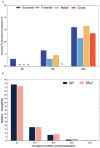Creation of Environmentally Friendly Super "Dinitrotoluene Scavenger" Plants
- PMID: 37715295
- PMCID: PMC10602510
- DOI: 10.1002/advs.202303785
Creation of Environmentally Friendly Super "Dinitrotoluene Scavenger" Plants
Abstract
Pervasive environmental contamination due to the uncontrolled dispersal of 2,4-dinitrotoluene (2,4-DNT) represents a substantial global health risk, demanding urgent intervention for the removal of this detrimental compound from affected sites and the promotion of ecological restoration. Conventional methodologies, however, are energy-intensive, susceptible to secondary pollution, and may inadvertently increase carbon emissions. In this study, a 2,4-DNT degradation module is designed, assembled, and validated in rice plants. Consequently, the modified rice plants acquire the ability to counteract the phytotoxicity of 2,4-DNT. The most significant finding of this study is that these modified rice plants can completely degrade 2,4-DNT into innocuous substances and subsequently introduce them into the tricarboxylic acid cycle. Further, research reveals that the modified rice plants enable the rapid phytoremediation of 2,4-DNT-contaminated soil. This innovative, eco-friendly phytoremediation approach for dinitrotoluene-contaminated soil and water demonstrates significant potential across diverse regions, substantially contributing to carbon neutrality and sustainable development objectives by repurposing carbon and energy from organic contaminants.
Keywords: 2,4-dinitrotoluene (2,4-DNT); carbon neutrality; complete degradation; rapid phytoremediation; sustainable development goals.
© 2023 The Authors. Advanced Science published by Wiley-VCH GmbH.
Conflict of interest statement
The authors declare no conflict of interest.
Figures








Similar articles
-
Biodegradation of 2,4-dinitrotoluene by different plant species.Ecotoxicol Environ Saf. 2015 Feb;112:54-9. doi: 10.1016/j.ecoenv.2014.07.026. Epub 2014 Nov 7. Ecotoxicol Environ Saf. 2015. PMID: 25463853
-
Remediation of dinitrotoluene contaminated soils from former ammunition plants: soil washing efficiency and effective process monitoring in bioslurry reactors.J Hazard Mater. 2001 Oct 12;87(1-3):139-54. doi: 10.1016/s0304-3894(01)00240-0. J Hazard Mater. 2001. PMID: 11566406
-
[Biodegradation of 2, 4- and 2, 6-dinitrotoluene in a pilot-scale system for soil contaminated with explosive compounds].Huan Jing Ke Xue. 2007 Mar;28(3):613-6. Huan Jing Ke Xue. 2007. PMID: 17633643 Chinese.
-
Phytoremediation as a management option for contaminated sediments in tidal marshes, flood control areas and dredged sediment landfill sites.Environ Sci Pollut Res Int. 2009 Nov;16(7):745-64. doi: 10.1007/s11356-009-0205-6. Epub 2009 Jun 16. Environ Sci Pollut Res Int. 2009. PMID: 19533193 Review.
-
Evolution of catabolic pathways for synthetic compounds: bacterial pathways for degradation of 2,4-dinitrotoluene and nitrobenzene.Appl Microbiol Biotechnol. 2003 Aug;62(2-3):110-23. doi: 10.1007/s00253-003-1341-4. Epub 2003 May 15. Appl Microbiol Biotechnol. 2003. PMID: 12750857 Review.
References
-
- Novik G. P., Sci. Total Environ. 2022, 842, 156864. - PubMed
-
- Kayıhan D. S., Kayıhan C., Çiftçi Y. Ö., Int. J. Phytorem. 2020, 23, 1.
-
- Pérez‐Pantoja D., Nikel P. I., Chavarría M., de Lorenzo V., Environ. Microbiol. 2021, 23, 2522. - PubMed
-
- Liu Y., Li J., Wang G., Zu B., Dou X., Anal. Chem. 2020, 92, 13980. - PubMed
-
- Avellaneda H., Arbeli Z., Teran W., Roldan F., World J. Microbiol. Biotechnol. 2020, 36, 190. - PubMed
Publication types
MeSH terms
Substances
Grants and funding
- 22ZR1444800/Shanghai Natural Science Foundation of China
- 2021-02-08-00-12-F00795/The Key Project Fund of the Shanghai Municipal Committee of Agriculture
- tuizi2022-1-5/The Key Project Fund of the Shanghai Municipal Committee of Agriculture
- (2022)005/Innovation Team project of Shanghai Academy of Agricultural Sciences
- 20XD1432200/Shanghai Academic Technology Research Leader
LinkOut - more resources
Full Text Sources
